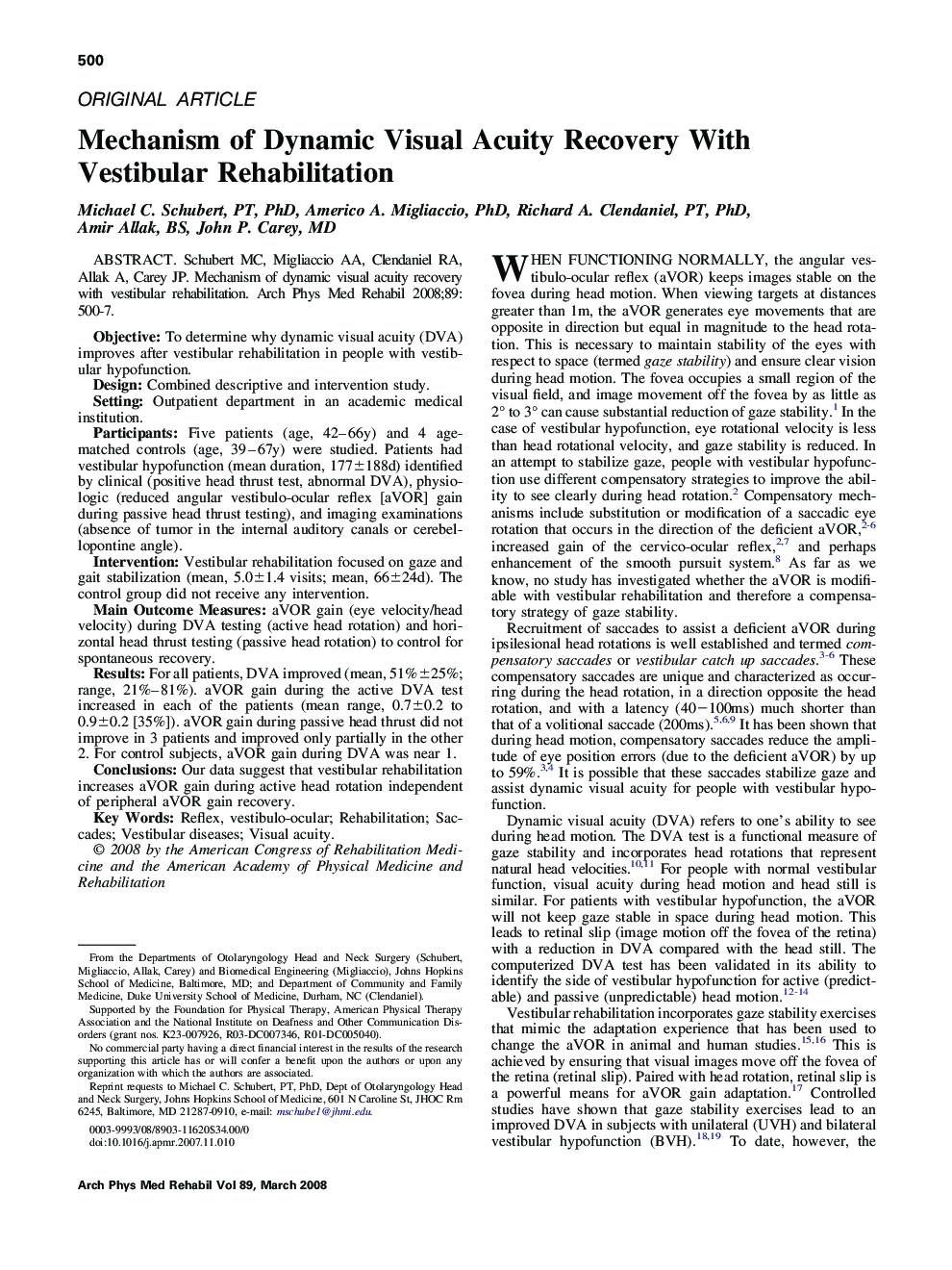| Article ID | Journal | Published Year | Pages | File Type |
|---|---|---|---|---|
| 3452224 | Archives of Physical Medicine and Rehabilitation | 2008 | 8 Pages |
Schubert MC, Migliaccio AA, Clendaniel RA, Allak A, Carey JP. Mechanism of dynamic visual acuity recovery with vestibular rehabilitation.ObjectiveTo determine why dynamic visual acuity (DVA) improves after vestibular rehabilitation in people with vestibular hypofunction.DesignCombined descriptive and intervention study.SettingOutpatient department in an academic medical institution.ParticipantsFive patients (age, 42–66y) and 4 age-matched controls (age, 39–67y) were studied. Patients had vestibular hypofunction (mean duration, 177±188d) identified by clinical (positive head thrust test, abnormal DVA), physiologic (reduced angular vestibulo-ocular reflex [aVOR] gain during passive head thrust testing), and imaging examinations (absence of tumor in the internal auditory canals or cerebellopontine angle).InterventionVestibular rehabilitation focused on gaze and gait stabilization (mean, 5.0±1.4 visits; mean, 66±24d). The control group did not receive any intervention.Main Outcome MeasuresaVOR gain (eye velocity/head velocity) during DVA testing (active head rotation) and horizontal head thrust testing (passive head rotation) to control for spontaneous recovery.ResultsFor all patients, DVA improved (mean, 51%±25%; range, 21%–81%). aVOR gain during the active DVA test increased in each of the patients (mean range, 0.7±0.2 to 0.9±0.2 [35%]). aVOR gain during passive head thrust did not improve in 3 patients and improved only partially in the other 2. For control subjects, aVOR gain during DVA was near 1.ConclusionsOur data suggest that vestibular rehabilitation increases aVOR gain during active head rotation independent of peripheral aVOR gain recovery.
